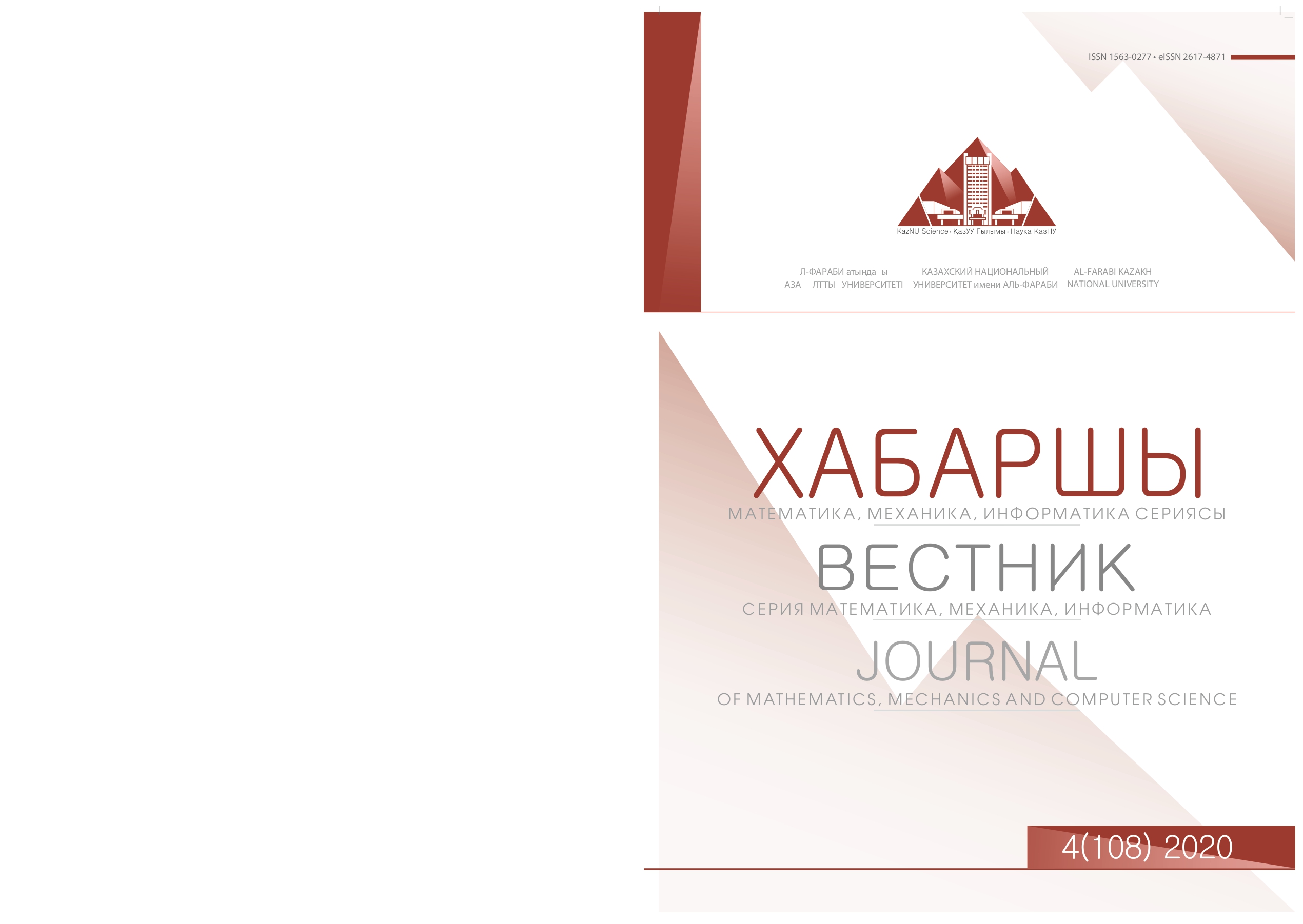Using the boundary elements approach to solve the problems of liquid filtration via the dam
DOI:
https://doi.org/10.26577/JMMCS.2020.v108.i4.08Keywords:
liquid filtration, dam, barrage, defected basin, wetting, boundary elements approachAbstract
The work deals with the method and programs to calculate the liquid filtration via the dam, with allowing for the events of their possible damage. On the base of the boundary elements approach the method to calculate the flow of a liquid via the dam in the presence of a watertight fitting member was conducted. Using the numeric test, the free boundary position at the liquid filtration via the dam with the defected upper and lower basins was received and provisional analysis with the outcomes, received in the event of the defect of the upper dam basin only, was conducted. The primary free surface position has been determined arbitrarily. The boundary elements disposition drawing for the soil unit at the stream with the free area via the barrage with the defected upper (at the top) and lower barrage basins has been developed with allowing for reaching the optimal computing time. The boundary elements disposition drawing for the soil unit at the stream with the free area via the barrage with the defected upper (in the middle) and lower dam basins has been developed for the same considerations. The application was created in Delphi 7 visual programming environment. The main calculated outcomes were compared for the potential at the stream with the free area via the barrage with the defected only upper basin made earlier and for the barrage with the defected upper and lower basins. The outcomes show that in the event with the upper dam basin defect there is more wetting of the soil than in the event with the defect of both dam basins. It can be explained by the fact that the liquid stream at the defect lower dam basin will be faster and wetting of the soil will be less. The results of submitted paper can be useful in engineering practice for designing the soil dams.
References
[2] Shirinskiy A.M., Plyushkin S.A., Brener A.M., "The method of calculation of process of filtration of two-phase fluids in a porous medium", Theoretical foundations of chemical engineering 15(1981), 302.
[3] Shirinskiy A.M., Plyushkin S. A. and Brener A.M., "The study of filtration of two-phase fluids in a centrifugal field", Theoretical foundations of chemical engineering 14(1980), 474.
[4] Brebbia C., Telles Zh., Vroubel L., Metody granichnykh elementov [Boundary elements methods] (M.: Mir, 1987, 524 pp.) [in Russian].
[5] Connor J., Brebbia C.A., Finite elements techniques for fluid flow (Butterworths, London, 1976).
[6] Кalbayeva А.Т., Kurakbayeva S.D., Kurakbayev А.D. and Brener А.М., "Mathematical model and software for methods of calculating liquid filtration through the soil dams", Journal "Herald of KazNRTU Almaty 115:3(2016), 574-578.
[7] Кalbayeva А.Т., Kurakbayev А.D., Brener А.М., Usenova A.Zh. and Kurakbayeva S.D., "Methods for calculating the water filtration through the dam with the damaged upper and lower pools", Journal "Herald of KazNRTU Аlmaty 119:1(2017), 91-95.
[8] Vo Trong Nguen, "Flow through filters in embankment dams" (Thesis of the degree of PhD. University of Wollongong, 2012), 287 pp.
[9] Yangiev A., Garrapov F. and Adjimuratov D. "Filtration process in earth fill dam body and its chemical effect on piezometers" (E3S Web Conf. 97, 2019, XXII International Scientific Conference "Construction the Formation of Living Environment" (FORM2019), P. 1-7).
[10] Kalbayeva А.Т., Berdaliyeva G.А. "Chislennoe issledovanie fil’tracii zhidkosti cherez dambu s vodonepronicaemymi zakladnymi elementami [Numerical investigation of the water filtration through the dam with water-impermeable filling elements]", Collection of scientific works of aspirants, candidates for a master’s degree, trainee-researchers of M. Auezov SKSU. Shymkent 3(2002), 8-11 [in Russian].
[11] Volkov I.M., Kononenko P.F. and Fedichkin I.K., Gidrotechnicheskie cooruzheniya [Hydrotechnical structures] (M.: Kolos, 1968, 464 pр.) [in Russian].
[12] Niedrige V.P., Gidrotekhnicheskie sooruzheniya. Spravochnik proektirovshchika [Hydrotechnical structures. Designer’s reference book] (Under the General ed.: M.: SI, 1983, 543 pp.) [in Russian].
[13] Gogoberidze M.I. et al., Obobshchenie dannyh statisticheskogo analiza avarij i incidentov v aspekte nadezhnosti plotin [Generalization of data from statistical analysis of accidents and incidents in the aspect of dam reliability] (Reports AN Gruz. SSR, 1977, 86, №3) [in Russian].
[14] Kalbaeva A.T., Brener A.M., Kurakbaeva S.D., "Primenenie metoda granichnyh elementov dlya opisaniya fil’tracii vody cherez dambu s vodonepronicaemym zakladnym elementom v sluchae ortotropnoj sredy [Application of the boundary element method for describing water filtration through a dam with a waterproof embedded element in the case of an orthotropic environment]", Science and education of Southern Kazakhstan 68:3(2008), 147-151 [in Russian].
[15] Kalbaeva A.T., Kurakbaeva S.D., Serimbetov M.A., "Primenenie metoda granichnyh elementov dlya resheniya zadach fil’tracii vody cherez dambu [Application of the boundary element method for solving problems of water filtration through a dam]",
Science and education of Southern Kazakhstan 81:2(2010), 84-87 [in Russian].




